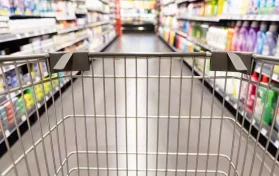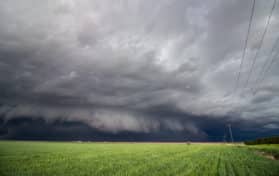
Inflation has hit every sector of the market, including the price of groceries. Beef went up by 14 – 20 percent in 2021, but by July, ground beef was up by 36 percent from the previous year. With a historic drought and other factors impacting farmers, many are sending a large portion of their herds to the sale barn. Experts are predicting that this will cause the price of beef to rise once more.
In June 2022 alone, the price of ground beef was up by nearly ten percent when compared with prices in June 2021.
Some cattle farmers are selling their entire herds, including breeding stock. The U.S. Department of Agriculture released a report this week detailing a contracting beef market that hasn’t been seen in years. The total inventory of beef cattle across the United States has dropped by two percent to 98.8 million since this time last year.
While a total drop in inventory is concerning, it’s the specific cattle that are being sold that is indicative of trouble in the agricultural economy. Farmers are selling off not only steers, which is typically sold for consumption, but also their breeding females.
USDA livestock analyst Shayle Shagam spoke via radio on the matter: “We are seeing large numbers of female stock have been placed in feedlots.” She added: “(This means) supplies of cattle going to feedlots is going to be declining (eventually), which will likely result in progressively tighter supplies of all fed cattle available for slaughter as wel move into 2023.”
Statistically, the number of female cows in feedlots is up by three percent, and the overall number of existing herds is down by 2.7 percent.
USDA officials believe that the ongoing decrease in the supply of cattle for consumption could cause beef prices to climb even higher than expected. Previously, the USDA had projected that average steer prices would be up by approximately 8.5 percent in 2023. However, this prediction was made before farmers experienced a historic drought as well as surging input prices. The CEO of the National Cattleman’s Beef Association, Colin Woodall, says that the 2022 drought is more widespread than previous years of dry conditions. In the past, cattle producers have sent their cattle to other regions for grazing, but this year, that isn’t an option. A great portion of the country, particularly the American West, is in a drought.
Woodall told Fox Business: “There’s no place to go because everybody is struggling to find the forage they need to feed their cattle. We do expect the prices to continue upwards, but everybody has to remember that it’s not cattle producers setting that price.”
Woodall pointed out that cattle farmers and ranchers are experiencing a huge surge in the cost of feeding and caring for their livestock. Woodall specifically mentioned the cost of feed, hay, and fertilizer. He also added that a huge spike in the price of diesel to run tractors and farm trucks has eaten into the budgets of cattle producers. “There’s so many things that go into producing cattle that the producers just don’t have any control over,” reported Woodall.
With so many farmers selling off their cows and heifers to slaughter, herd depletion will continue. Unfortunately, rebuilding the herd could take years to complete.
According to a Missouri farmer who specializes in breeding cattle, John Kleiboeker, “A heifer is two years old before she produces her first baby. That calf is another eighteen months after that. So you’re talking about 40 months from the time that little baby heifer is born until she has produced a pound of beef.”
Kleiboeker added that while he hasn’t personally had to sell of his breeding stock, but he has contemplated creating a “cull list.” He pointed to hay that he typically purchases each year. While he typically purchases at least 110 to 120 large round bales from the same supplier’s first round of hay, this year, he has only been able to purchase 57. In addition to being able to purchase fewer bales, the cost of each bale has risen by nearly fifty percent to $75 per bale. Unfortunately, there will be no second cut due to dry conditions. Kleiboeker hopes that there will be at least one more cutting this year, but currently, he is having to purchase hay from another supplier.
Kleiboeker says that hay is available, but he’s having to pay extra freight costs to ship to between 200 – 250 miles. Large trucks that haul the hay charge between $5 and $6 per mile. He offered the example of spending $1,000 or more to get thirty round bales of hay – “it gets really expensive real fast.”





